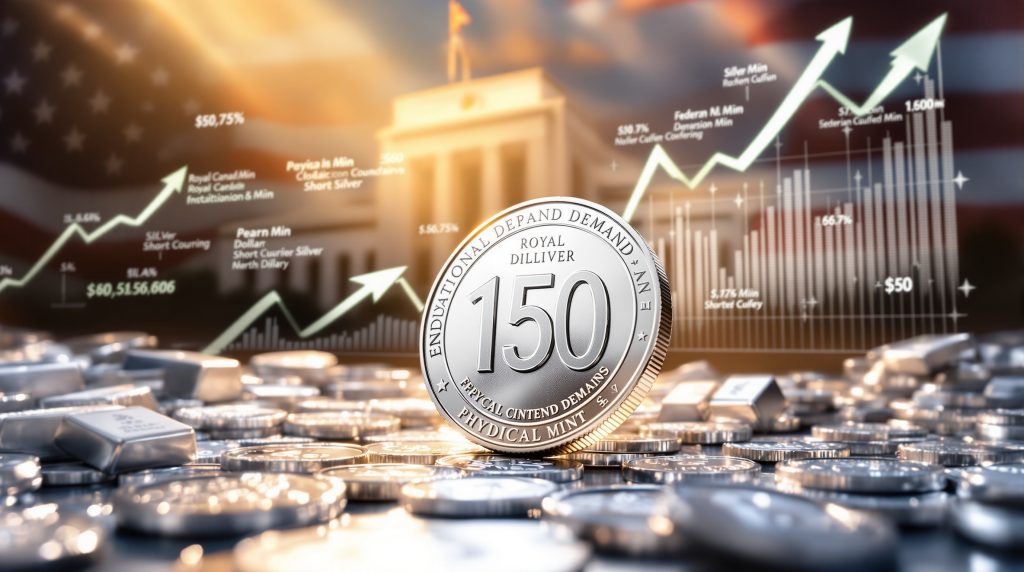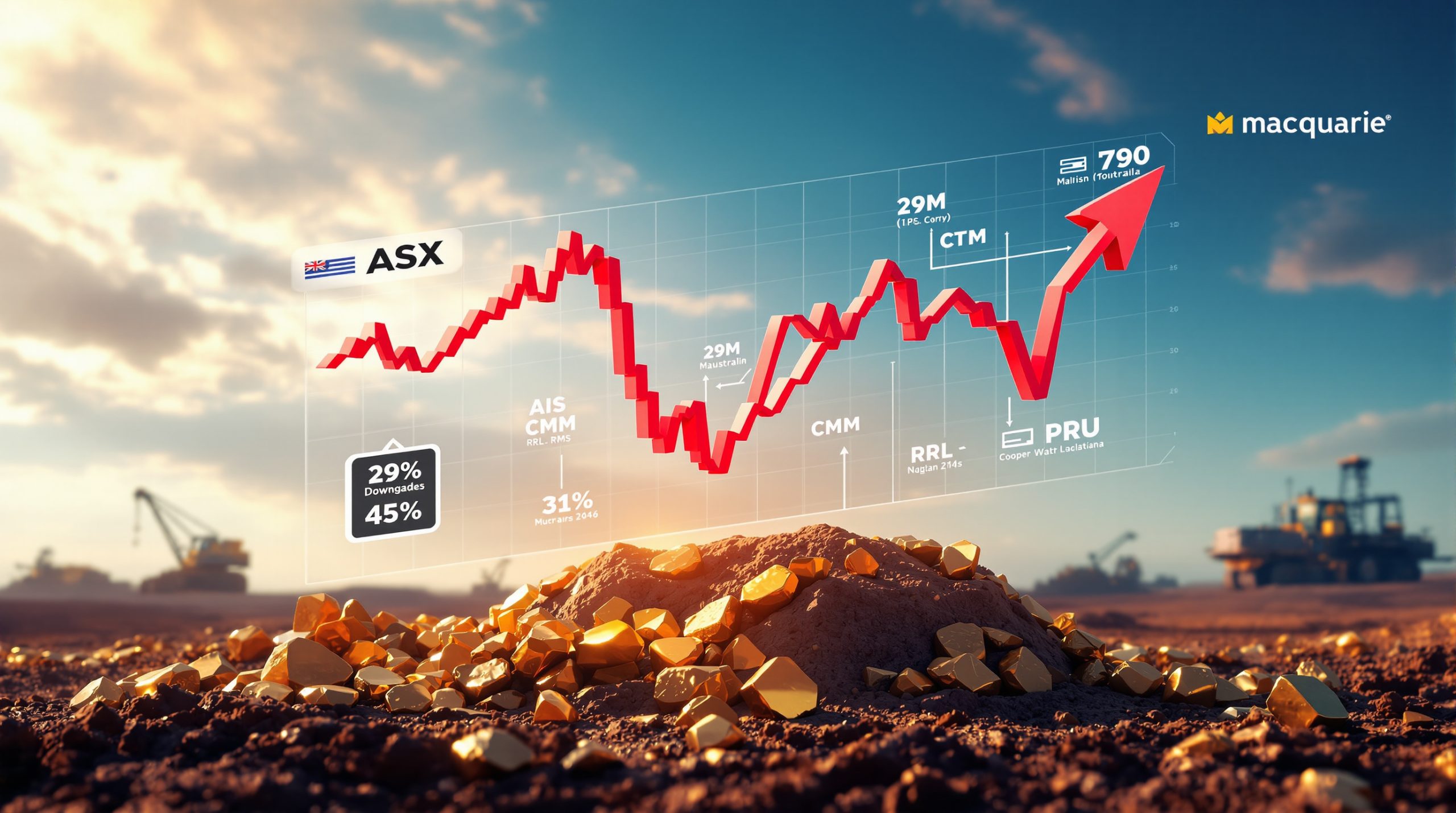Understanding the Silver Market Squeeze: Causes, Impact, and Future Outlook
The silver market squeeze is experiencing a significant supply-demand imbalance, pushing prices above $50 per ounce and creating what many analysts describe as a "squeeze." This price movement represents a dramatic shift in a market that has been relatively subdued for years, suddenly breaking through resistance levels that have held since the early 1980s.
Multiple Factors Converging Simultaneously
The current squeeze stems from several interconnected factors creating a perfect storm in the silver market. Institutional demand has accelerated significantly, with central banks and large financial institutions increasing their precious metals holdings as currency hedges.
Major market participants have reduced their silver short positions by approximately 50% in recent months, removing substantial selling pressure that previously capped price advances.
Physical supply constraints have become increasingly evident, with multiple mints worldwide reporting product shortages and delivery delays that suggest deeper structural issues rather than temporary disruptions.
Federal Reserve monetary policy shifts, particularly signals of interest rate cuts, have triggered significant capital flows into precious metals as investors seek inflation protection.
This combination of factors has built momentum rapidly as both retail and institutional investors rush to secure physical holdings in an increasingly tight market.
How Severe Are the Physical Silver Shortages?
Reports of physical silver shortages have intensified across global markets, creating unprecedented supply chain disruptions in the retail precious metals sector.
Evidence of Tightening Physical Markets
Several significant supply indicators point to genuine scarcity in the physical silver market:
| Mint/Supplier | Reported Shortage | Duration |
|---|---|---|
| Royal Canadian Mint | 100oz silver bars intermittently unavailable | 3-4 month cycles throughout year |
| Royal Canadian Mint | 10oz silver bars completely unavailable | Entire year |
| Rand Refinery (South Africa) | Krugerrands sold out | Several weeks |
| Perth Mint (Australia) | Various silver products unavailable | Ongoing |
| Multiple global dealers | Kilo bars of silver sold out | Varying periods |
These shortages appear more structural than temporary, with persistent patterns emerging across multiple products and regions. Industry insiders suggest mints may be prioritizing sovereign coin production over other products due to raw material constraints.
The situation indicates deeper issues in the physical silver supply chain beyond normal seasonal fluctuations, with potential implications for price discovery mechanisms in both retail and wholesale markets.
What Triggered the Recent Price Breakout?
The silver market remained relatively stable for years despite underlying fundamentals suggesting potential upside. The recent explosive move appears to have been catalyzed by specific market events that changed the dynamic almost overnight.
Key Catalysts Behind the Breakout
The dramatic price action can be traced to several trigger points:
-
Federal Reserve policy pivot: Jerome Powell's Jackson Hole speech in August signaled potential rate cuts, fundamentally changing market expectations for monetary policy.
-
Algorithmic trading activation: Market participants estimate that approximately $12 trillion in momentum-following funds began detecting and acting on precious metals price movements once key technical levels were breached.
-
Short covering acceleration: As prices began rising, entities with significant short positions rushed to cover, creating additional buying pressure in a self-reinforcing cycle.
-
Physical market stress signals: Reports of supply tightness in wholesale markets indicated limited ability to meet surging demand, particularly in deliverable-grade silver.
These factors created a perfect storm where price increases triggered more buying, short covering, and institutional participation, leading to the parabolic move observed in recent weeks.
How Does This Compare to Previous Silver Squeezes?
The current silver market dynamics invite comparison to previous price spikes, particularly the infamous Hunt brothers episode of 1980 when prices briefly touched similar levels.
Historical Context and Key Differences
Several aspects differentiate the current situation from previous squeezes:
-
Broader participation: Unlike the Hunt brothers' concentrated effort, today's squeeze involves diverse market participants across retail, institutional, and sovereign categories, making it potentially more sustainable.
-
Structural supply issues: Current shortages appear more widespread and persistent than previous episodes, suggesting deeper fundamental imbalances.
-
Monetary environment: Today's backdrop includes unprecedented global debt levels and currency debasement concerns, creating a more supportive macroeconomic context for precious metals.
-
Industrial demand component: Modern industrial applications for silver (solar panels, electronics, medical devices) create additional demand pressure absent in previous cycles, with renewable energy requirements growing particularly rapidly.
While the price levels may appear similar to historical peaks, the underlying market structure and fundamental drivers suggest this episode may have more sustainable characteristics than previous short-term squeezes that were driven primarily by speculative activity.
What Does Gold's Performance Tell Us About the Broader Monetary System?
Gold's move above $4,000 per ounce represents a significant milestone and sends powerful signals about the state of the global monetary system.
Gold as a Monetary Barometer
Gold's dramatic price appreciation reflects several concerning monetary realities:
-
Currency devaluation acceleration: When measured against gold, the U.S. dollar has lost over 99% of its purchasing power since the 1930s, with the pace of devaluation appearing to accelerate.
-
Purchasing power erosion: What cost 35 dollars per ounce in the 1930s now costs approximately 3,500 dollars, representing a 100-fold increase that reflects the diminishing value of fiat currencies.
-
Monetary system stress: Gold's parabolic move suggests growing institutional concerns about currency stability and the sustainability of current monetary frameworks.
-
Central bank policy limitations: The price action indicates market skepticism about central banks' ability to normalize monetary policy after years of unprecedented intervention.
When viewed through this lens, gold's performance isn't merely a commodity price move but rather a referendum on the stability and sustainability of the current fiat monetary system. The gold price forecast signals diminishing confidence in currency-based savings as a reliable store of value.
Why Are Mining Stocks Underperforming Despite Record Metal Prices?
One puzzling aspect of the current precious metals bull market is the relative underperformance of mining company shares, which typically amplify the movements of the underlying metals.
Explaining the Mining Stock Disconnect
Several factors may explain this counterintuitive market behavior:
-
Profit-taking pressure: Investors with existing mining positions may be rotating into physical metals or other sectors, creating temporary selling pressure despite improved fundamentals.
-
Operational concerns: Rising input costs (energy, labor, equipment) may be offsetting some price benefits, compressing profit margin expansion despite higher metal prices.
-
Skepticism about sustainability: Market participants may doubt the durability of current price levels, hesitating to price in long-term higher metal prices into equity valuations.
-
Liquidity preferences: During periods of extreme market volatility, investors often prefer the liquidity of physical metals over mining equities, particularly given potential operational disruptions.
-
Lag effect: Mining stocks sometimes experience delayed reactions to metal price movements, particularly during rapid advances when market participants need time to reassess valuations.
Historical patterns suggest mining equities typically catch up and eventually outperform the metals during sustained bull markets, potentially indicating current underperformance may be temporary rather than structural. The mining industry evolution may also influence how investors value these companies going forward.
How Might the Silver Market Squeeze Evolve?
The trajectory of the silver market from current levels remains a subject of intense speculation, with potential for both continued advances and corrective phases.
Potential Price Movement Scenarios
Market analysts suggest several possible paths forward:
-
Consolidation phase: Silver may experience a battle around the psychologically important $50 level, with multiple attempts to break above and hold this threshold before establishing a new trading range.
-
Accelerating volatility: Daily price movements could increase from recent $1-2 ranges to $5-10 swings as market liquidity thins and larger players adjust positions, creating challenging conditions for smaller traders.
-
Exponential phase: If physical shortages intensify, price discovery could become disorderly, potentially leading to $10-20 daily moves as markets struggle to establish equilibrium between supply and demand.
-
Supply response limitations: Unlike many commodities, silver production is largely a byproduct of other metal mining (primarily copper, lead, and zinc), limiting the market's ability to quickly increase supply in response to higher prices.
The unprecedented nature of current market conditions makes precise forecasting difficult, but the structural supply-demand imbalance suggests continued upward pressure remains the path of least resistance. The silver squeeze analysis indicates investors should prepare for potentially extreme volatility in either direction as this situation unfolds.
What Broader Economic Signals Are Emerging From Precious Metals Markets?
The dramatic moves in precious metals markets occur against a backdrop of significant economic stress signals that may portend broader financial system challenges.
Warning Signs From Adjacent Markets
Several concerning economic indicators have emerged alongside the precious metals rally:
-
Auto loan market distress: Major financing companies are experiencing significant defaults and fraud allegations, suggesting consumer financial stress.
-
Housing repossessions: Some analysts suggest U.S. housing foreclosure activity has increased substantially, though official data from ATTOM Data Solutions indicates levels remain well below 2009 financial crisis peaks.
-
Commercial real estate stress: Significant vacancy rates and refinancing challenges in commercial property have created growing concerns about potential defaults and banking sector exposure.
-
Employment data discrepancies: Some analysts suggest official unemployment statistics may not fully capture labor market weaknesses, with alternative measures potentially indicating greater economic vulnerability.
-
Banking system fragility: Persistent concerns about bank balance sheet quality following regional banking issues continue to create uncertainty in financial markets.
These concurrent signals suggest the precious metals rally may be reflecting broader economic fragility rather than simply sector-specific dynamics, potentially serving as an early warning system for more widespread financial stress amid growing US economic uncertainty.
How Can Investors Navigate the Current Silver Market Environment?
For investors considering exposure to the silver market, the current environment presents both significant opportunities and substantial risks that require careful strategy.
Strategic Considerations for Silver Investors
Several approaches may help navigate the volatile silver landscape:
-
Physical allocation priorities: Focusing on sovereign coins and recognized bars from major refiners may reduce acquisition challenges during periods of product shortages.
-
Dollar-cost averaging: Implementing systematic purchasing rather than attempting to time exact entry points can help manage the extreme price volatility characteristic of silver markets.
-
Realistic premium expectations: Understanding that retail premiums may remain elevated during periods of physical shortage helps set appropriate expectations for acquisition costs.
-
Diversification within metals: Balancing silver exposure with gold and potentially platinum group metals provides diversification benefits while maintaining precious metals exposure.
-
Risk management discipline: Sizing positions appropriately given silver's historical volatility profile helps prevent emotional decision-making during extreme price movements.
The most prudent approach likely involves viewing silver as a long-term monetary insurance policy rather than a short-term trading vehicle, particularly given the potential for extreme price volatility in either direction. This perspective can help investors maintain conviction during inevitable corrective phases.
What Is the Long-Term Outlook for Silver Prices?
While short-term price movements remain unpredictable, the structural factors driving the silver market point toward significant long-term appreciation potential.
Fundamental Drivers of Future Silver Valuation
Several enduring factors support a constructive long-term outlook:
-
Persistent supply deficits: Annual silver production continues to lag combined industrial and investment demand, creating a fundamental imbalance that supports higher prices over time.
-
Industrial demand acceleration: Renewable energy, electronics, and medical applications continue to increase silver consumption, with solar panel production particularly driving demand growth.
-
Monetary role resurgence: Silver's historical monetary function may regain prominence in an environment of currency instability, attracting investors seeking tangible assets.
-
Above-ground inventory depletion: Decades of persistent deficits have reduced available above-ground stocks, limiting the market's ability to quickly meet surging demand.
-
Mining production constraints: Environmental regulations, resource nationalism, and grade decline limit production growth potential, creating persistent supply constraints.
Historical precious metals bull markets have typically delivered 7-8x returns from beginning to end. If applied to the current cycle, this pattern would suggest potential for significantly higher prices over the coming years, though with substantial volatility along the way.
Conclusion: A Transformative Moment in Precious Metals Markets
The current silver market squeeze represents more than just a temporary price spike—it signals a potential paradigm shift in how markets value precious metals relative to fiat currencies. The convergence of physical supply constraints, institutional demand, and monetary policy concerns has created conditions for a sustained revaluation of silver's role in both industrial applications and wealth preservation.
For investors, the key takeaway is that current market dynamics reflect fundamental imbalances rather than merely speculative excess. While price volatility will undoubtedly continue, the structural factors driving the silver market suggest the long-term trajectory remains firmly upward, potentially signaling broader changes in the global monetary landscape.
Disclaimer: This article contains market analysis and investment information that should not be construed as professional financial advice. Precious metals markets involve significant risk and volatility. Past performance is not indicative of future results. Investors should conduct their own research and consult with a qualified financial advisor before making investment decisions.
Ready to Capitalise on the Next Silver Market Movement?
Discover the next major mineral opportunity before the market with Discovery Alert's proprietary Discovery IQ model, which delivers real-time notifications on significant ASX discoveries across all commodities including silver and gold. Visit our dedicated discoveries page to understand how early identification of major mineral discoveries can generate substantial returns for informed investors.




